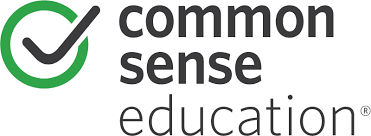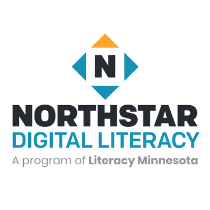IS.3 Evaluate Online Information

In My Life
In My Work
In My Education
As a Teacher/Trainer
Explore Learning Activities

Lesson 3: Hallucination Detective
AI for Education
Teach students about the risks of over-relying on AI chatbots using this fast-paced, hands-on lesson. In this lesson, students play the role of a ‘Hallucination Detective’, investigating how and why generative AI chatbots sometimes produce answers that contain incorrect or made-up information. To do this, students examine a real-life case study and then test and fact-check an AI chatbot’s answers for inaccuracies or made-up information, known as hallucinations. Lastly, students create a short presentation on the risks of chatbot hallucination and propose methods to combat it.
- IS.3 Evaluate Online Information
- IS.5 Use Search Strategies

Lesson 2: The Mind of a Machine
AI for Education
In this lesson, students explore what generative artificial intelligence (GenAI) is, and how it is trained to respond to human prompts. Students then use the game ‘Celebrity Heads’ to compare ChatGPT, a Generative AI (GenAI) Chatbot, to human intelligence. Students then synthesize their learning by evaluating what ChatGPT’s performance in Celebrity Heads tells us about the strengths and limitations of GenAI today.
- IS.2 Access Information Sources
- IS.5 Use Search Strategies
- IS.3 Evaluate Online Information
- LL.2 Adapt to New Technology

Lesson 7: AI Algorithms - How Well Do They Know You?
AI Literacy Lessons for Students
How does artificial intelligence influence what we see online? In a world filled with more content than we could ever possibly consume, recommendation algorithms have long been a necessary part of the internet. This type of AI helps determine what we see (and don't see) online. But while that can be helpful, these algorithms can have unintended consequences, like creating filter bubbles, perpetuating bias, and undermining our creativity, choices, and opportunities. Use this lesson to help your students think critically about how AI is shaping their experiences online in both helpful and harmful ways.
- CO.5 Use Social Media
- IS.3 Evaluate Online Information
- PS.5 Maintain Well-being Online
- CR.2 Understand and Use Data

Lesson 6: How AI Bias Impacts Our Lives
AI Literacy Lessons for Students
What are the impacts of AI bias? Just like people, artificial intelligence tools can make mistakes. That could mean simply mistaking tomatoes for apples. But the impacts of AI bias can often be much more serious. AI tools can end up recirculating harmful stereotypes and inequities within society. In this lesson, students will think critically about AI bias and how it affects the world.
- IS.3 Evaluate Online Information
- PS.5 Maintain Well-being Online
- CR.2 Understand and Use Data

Lesson 5: Understanding AI Bias
AI Literacy Lessons for Students
How does AI bias happen? Artificial intelligence is trained on real-world data that people have given it, and if that data contains biases (or is incomplete), the AI can end up being biased, too. In this lesson, students will think critically about the training data that informs what AI tools can do, and consider possible ways to reduce AI bias.
- CR.2 Understand and Use Data
- IS.3 Evaluate Online Information
- IS.1 Use and Apply Information

Lesson 4: AI Chatbots & Friendship
AI Literacy Lessons for Students
How can AI chatbots impact our idea of friendship? Over time, technology has influenced how we build and maintain friendships. And with recent developments in AI technology, we now have generative AI chatbots that can conduct what feels like a very real conversation. While this can be entertaining and helpful, it can also cause people to develop emotional connections with chatbots. But is this OK? In this lesson, students will grapple with this question, reflecting upon what makes human friendships special and unique.
- PS.5 Maintain Well-being Online
- LL.2 Adapt to New Technology
- IS.3 Evaluate Online Information
- PS.4 Keep Kids Safe Online

Lesson 3: Chatbots: Who’s Behind the Screen
AI Literacy Lessons for Students
Why are AI chatbots designed to sound so human-like, and how can that impact our everyday lives? Recent advancements in artificial intelligence are making chatbot technology more helpful (and clever), while at the same time, it's becoming harder to tell if we're talking to a person or a robot. In this lesson, students will explore how and why AI chatbots are designed to sound so human-like, which will help them think critically about why this can be both helpful and harmful.
- IS.3 Evaluate Online Information
- LL.2 Adapt to New Technology
- PS.5 Maintain Well-being Online

Information Literacy
Northstar Digital Literacy Assessment
This free assessment can be used to check you skills.
- IS.5 Use Search Strategies
- IS.7 Understand Search Results
- IS.1 Use and Apply Information
- IS.2 Access Information Sources
- IS.3 Evaluate Online Information
- IS.6 Organize Information and Files
- EF.2 Search the Internet
- EF.3 Use Basic Browser Tools
- WO.4 Choose the Appropriate Tools

Internet Basics
Northstar Digital Literacy Assessment
This free assessment can be used to check you skills.
- MO.2 Understand Online Access
- EF.11 Connect to Wifi
- EF.3 Use Basic Browser Tools
- IS.3 Evaluate Online Information
- PS.3 Limit Sharing of Personal Data
- EF.12 Protect My Privacy on Shared Devices
- PS.6 Recognize Online Threats
- DO.3 Keep Devices Safe and Secure
- EF.4 Use the Mouse
- IS.5 Use Search Strategies
- EF.2 Search the Internet
- EF.5 Understand My Computer
Get Bad News!
In Bad News, you take on the role of fake news-monger. Your task is to get as many followers as you can while slowly building up fake credibility as a news site. But watch out: you lose if you tell obvious lies or disappoint your supporters!
- IS.3 Evaluate Online Information
- CO.5 Use Social Media

Reconocer las estafas
DigitalLearn.org
Aprender algunos consejos que le ayudarán a saber si algo es un fraude o una estafa.
- PS.6 Recognize Online Threats
- IS.3 Evaluate Online Information

List of fake news websites
User-submitted
Explore this dynamic list of fake news websites that publish hoaxes and disinformation for purposes other than news satire.
- IS.3 Evaluate Online Information
